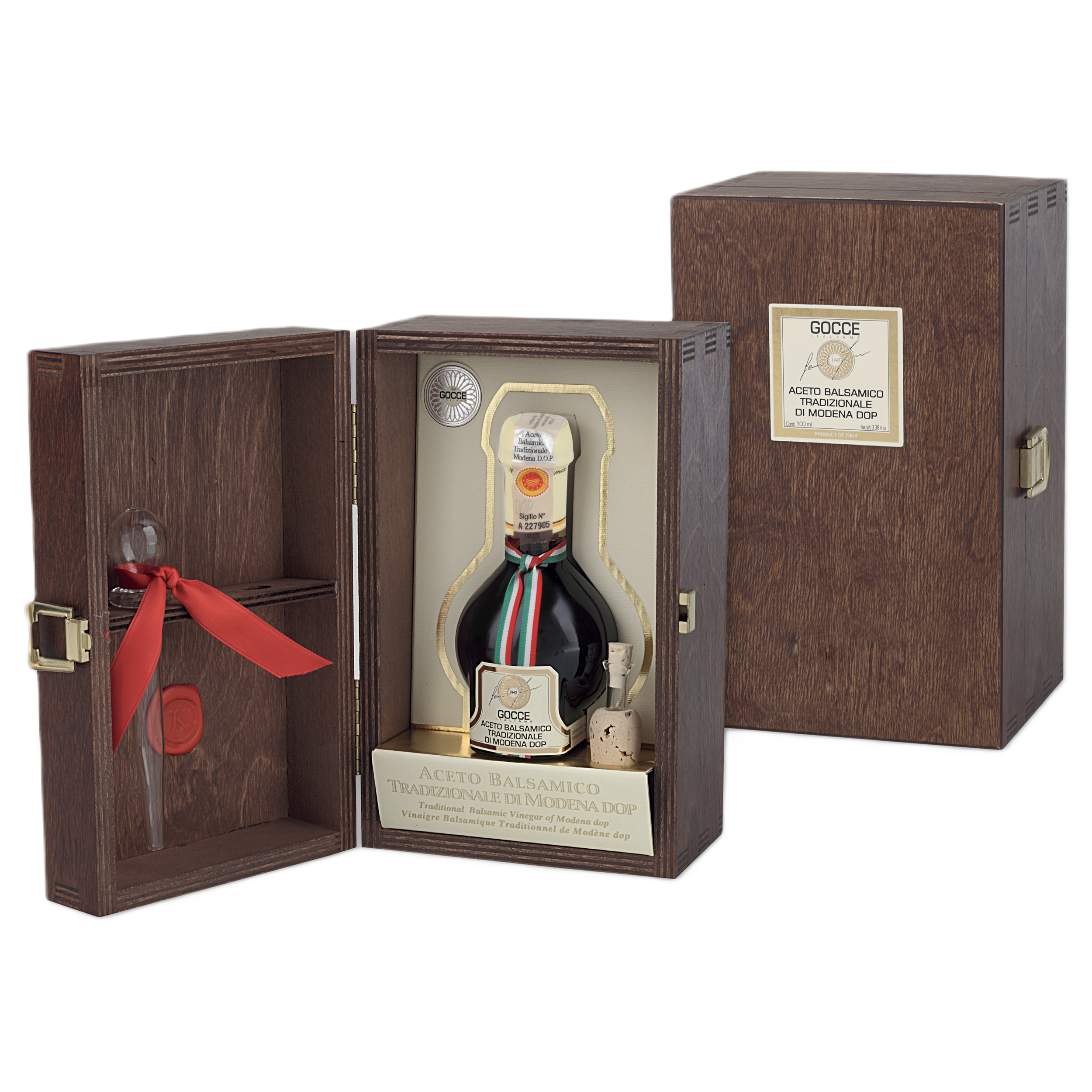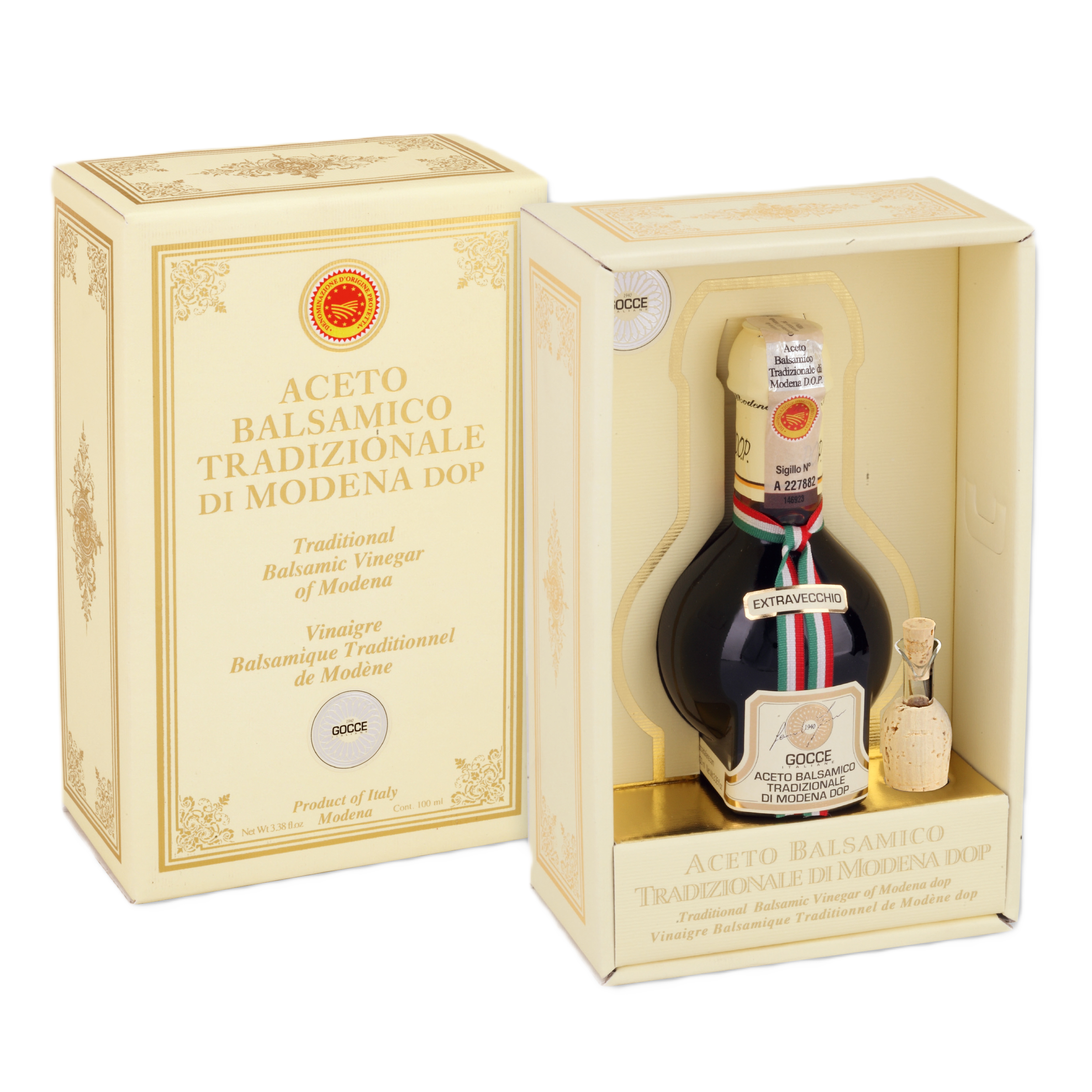The Truth About Traditional Balsamic Vinegar: A Taste of Italy’s “Black Gold”
There are vinegars—and then there’s Traditional Balsamic Vinegar of Modena DOP. If you’ve only tasted the thin, acidic, mass-produced stuff from your local grocery store, you haven’t truly experienced balsamic vinegar at all. What flows from those sleek, glass bottles crafted in the hills of Emilia-Romagna is something closer to culinary alchemy than mere condiment. It’s time to lift the curtain on one of Italy’s most treasured artisanal secrets. If you have already heard enough, and want to know where to get some some high quality handcrafted Traditional Balsamic Vinegar of Modena DOP, click here to shop.
What Makes Traditional Balsamic Vinegar So Different?
Traditional balsamic vinegar (or Aceto Balsamico Tradizionale) is not just a product—it’s a process, a heritage, and a legacy passed down through generations for almost a thousand years. Unlike mass-market vinegars that are often made with wine vinegar, sugar, caramel coloring, and thickeners, real balsamic is 100% cooked grape must—nothing else.
Here’s what sets it apart:
Aged to Perfection: Traditional balsamic is aged for a minimum of 12 years minimum: called Affiniato, and Extravecchio for a mimimum of 25 years. The grape must is transferred every year to a different barrel that can differ in species from the previous barrel (oak, cherry, chestnut, juniper), each imparting unique flavor notes over time. That means that bottle of Extravecchio has been transferred to at least 25 different barrels, each smaller than the last.
Handcrafted with Care: Every drop is watched over, tended to, and refined by Italian artisans—often the same families who’ve been making it for generations.
DOP Certified: This ensures authenticity and quality. Only vinegar made in Modena or Reggio Emilia, under strict regulations, can bear the label “Tradizionale.” Visit the Consortium’s Website to learn more about this strictly controlled process.
Thick, Sweet, and Complex: The result is a rich, glossy liquid that coats the spoon like syrup and tastes like a symphony—sweet, tangy, woody, fruity, and earthy, all in one.
Grocery Store Balsamic: What You’re Really Getting
Most “balsamic” vinegars found on store shelves are, in truth, diluted imitations. They’re typically:
Made with wine vinegar + added sugars or thickeners
Aged for mere months, if at all
Mass-produced with no regional origin or craftsmanship
Designed to mimic the taste of traditional balsamic—without the time or integrity
These vinegars may have their place in a marinade, but if you’re looking for depth, elegance, and authenticity, they pale in comparison.
The Uses of Traditional Balsamic Vinegar
When something takes over a decade to make, you celebrate it. Traditional balsamic vinegar is best used as a finishing touch—a final flourish to elevate the dish from simple to spectacular.
Here are a few ways to use it:
Drizzle over Parmigiano Reggiano or aged Pecorino
Finish grilled steaks or roast duck with a few precious drops
Dress strawberries, peaches, or figs for a sophisticated dessert
Enhance risotto or roasted vegetables
Spoon over vanilla gelato for a sweet-savory contrast (my personal favorite use)
Think of it not as vinegar, but as a culinary elixir—one that transforms food into memory.
The low rolling hills of Castlevetro di Modena, overlooks Lambrusco vineyards grown for both wine and Balsamic Vinegar production.
An Invitation to Tradition
When you open a bottle of traditional balsamic vinegar, you’re not just seasoning your meal—you’re entering into a story. A story of Italian hills and sun-ripened Lambrusco grapes, of generational barrels tucked away in dusty attics, patience, and purpose.
It’s an experience. A ritual. A taste of something older than trends and untouched by shortcuts.
At Fratelli del Vino, we import DOP-certified, handcrafted balsamic vinegar from Modena, aged for years and made the way it’s always been made—with reverence and care. If you’ve never tried the real thing, you’re in for something truly magical.
Discover our Traditional Balsamic Vinegar of Modena Affinato (15 years) here → Affinato
Discover our Traditional Balsamic Vinegar of Modena Extravecchio (30 years) here → Extravecchio
Or pair it with our cold-pressed Italian olive oil from Sicily for the ultimate Italian pantry experience. → Olive Oil




